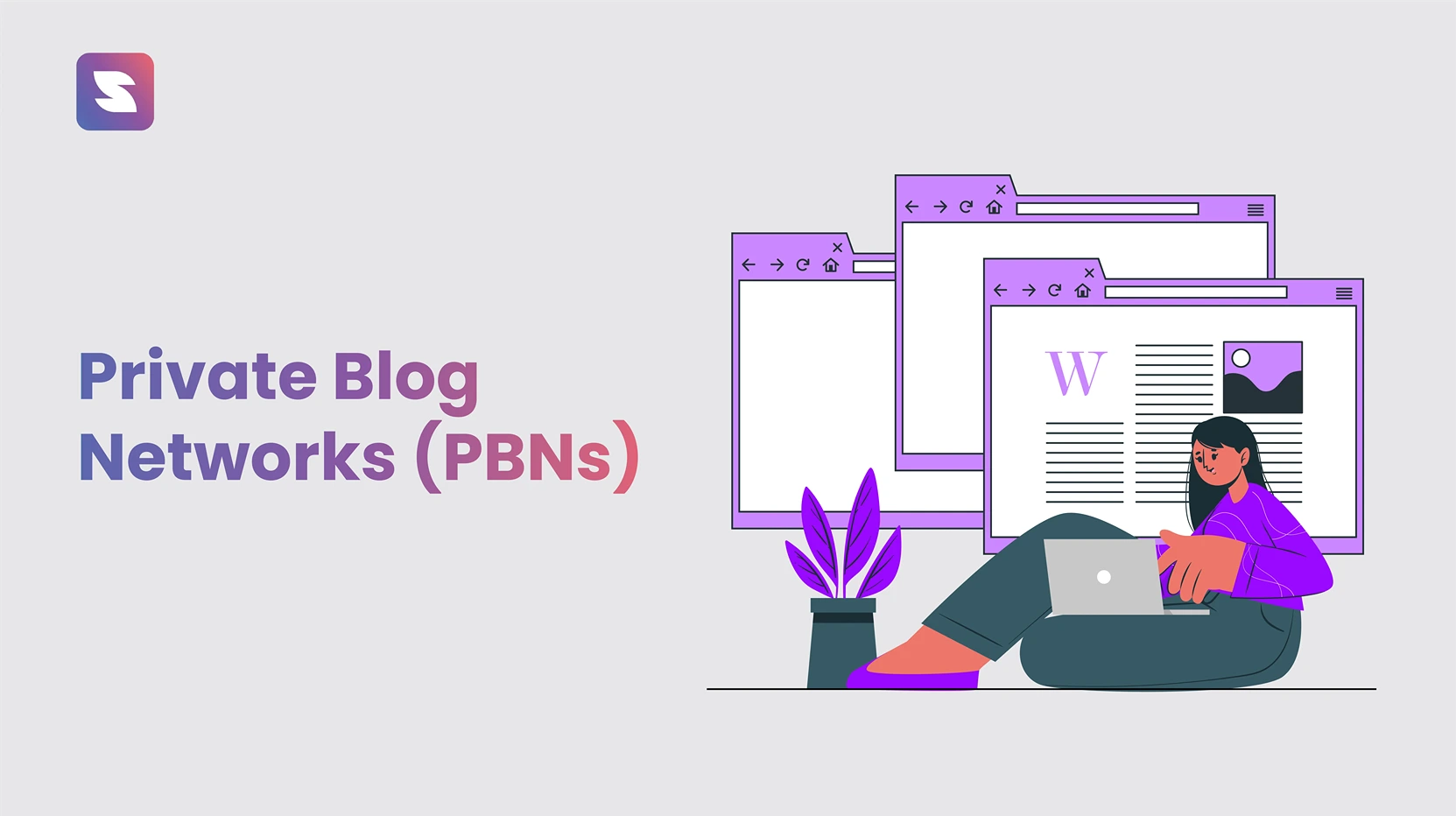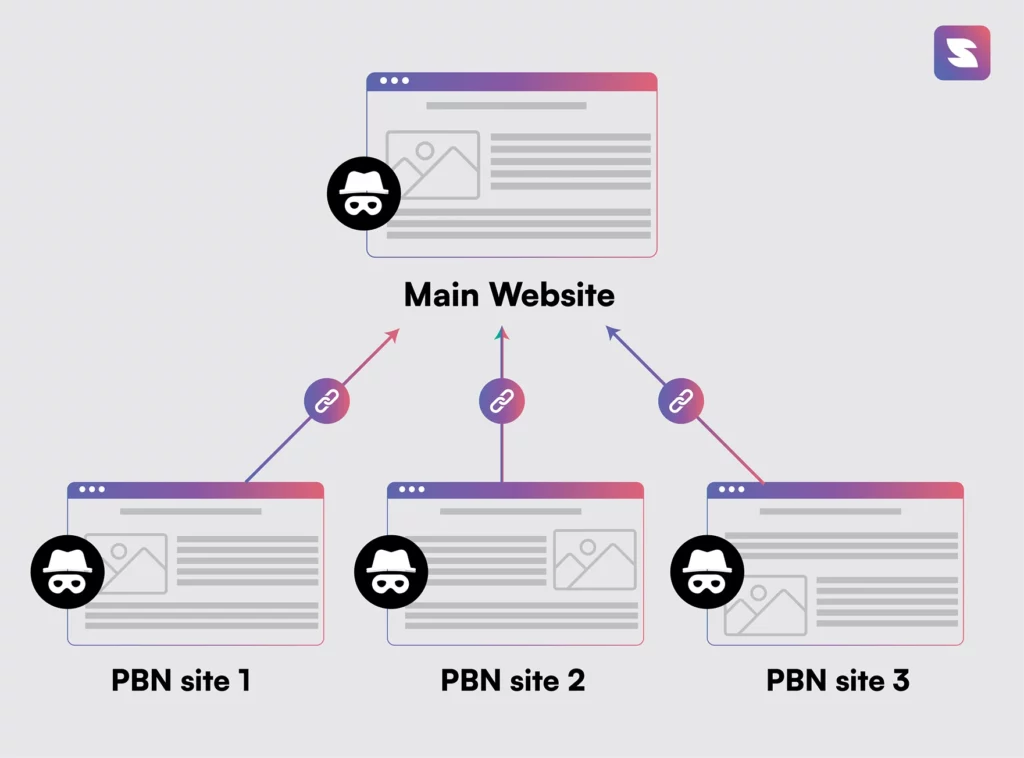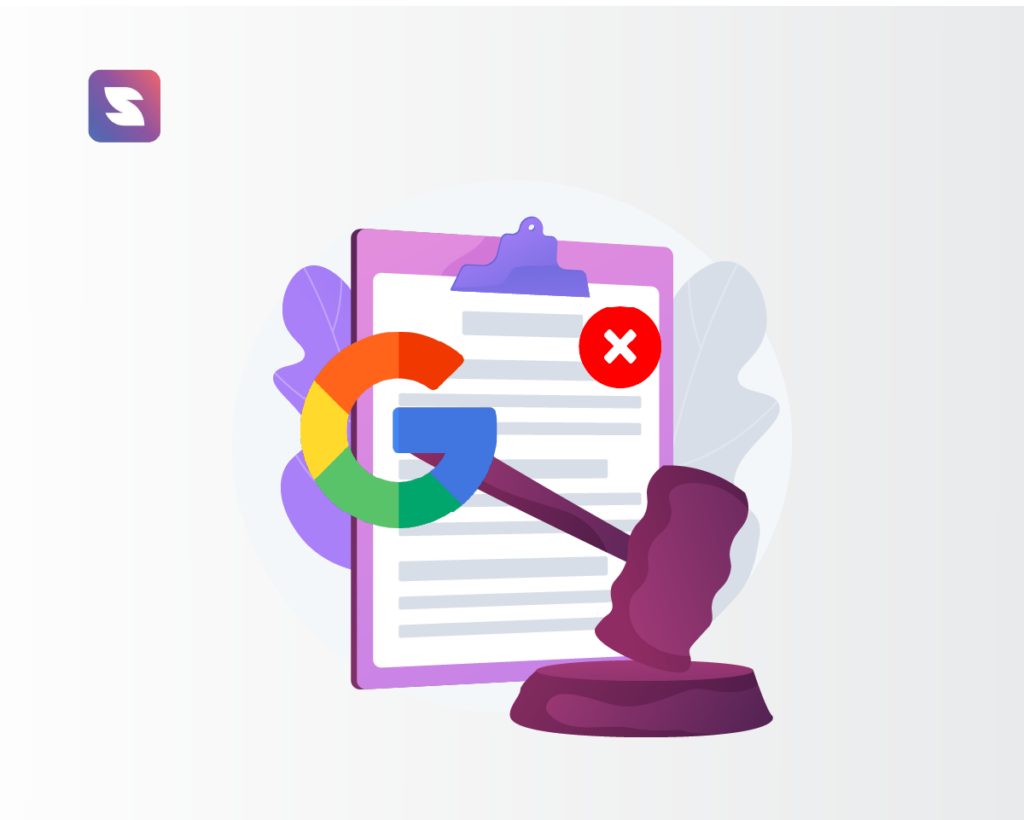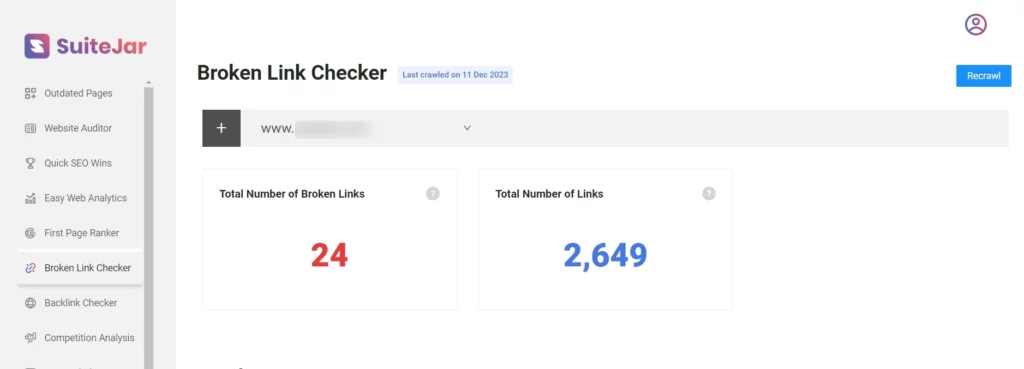Only $99 for a full year!
No credit card required
Rank on Google's first page in 3 months
A Complete Guide Into Private Blog Network
Mar 20, 2024 | user
More than just quality content, you need backlinks to get higher rankings. Earning backlinks is one of the most important factors considered for the ranking. Each backlink you get will be considered a vote of confidence for the content you publish online. Without backlinks, you will be one wheel short of riding up the Search Engines Result Pages (SERPs).
Andrey Lipattsev of Google confirms backlinks as one of Google’s strongest factors for ranking. But to attain quality backlinks, SEO’s would need a solid content strategy and SEO roadmap. But to overcome the increasing competition, some SEOs have found another way to achieve backlinks – Private Blog Networks.
Let’s discuss this in detail.
What is a Private Blog Network?
PBN are a network of blogs created just for the sake of backlinking. It is a hack to manipulate Google, gain authority, and dominate search results.

To achieve this, individuals or companies purchase old domains that have maintained their authoritative status over time. These domains are then used to pass links to a target website.
The use of PBNs is fraught with risks, including the potential for severe search engine penalties. Google’s advanced algorithms are increasingly adept at identifying such schemes, which can lead to a website being demoted in search rankings or completely removed from search results.
Relying on PBNs undermines the integrity of search results and can degrade the overall user experience on the web.
Individuals or companies purchase old authoritative domains to pass links to a target website. Though it is a great way to increase the number of backlinks and boost rankings, it is considered a black hat SEO since it doesn’t comply with Google’s webmaster guidelines.
How Do PBNs Work?
Here’s a step-by-step explanation of how PBNs work:
- Acquire Expired Or Expiring Domains:
PBN operators search for expired or expiring domains with a good Domain Authority (DA) and Page Authority (PA). Why? Because these domains have already gained trust and authority in search engines’ eyes.
- Register And Host The Domains:
After acquiring the domains, they are registered and hosted on different servers or under different hosting accounts. This is done to create the appearance of a diverse and organic link profile and to prevent search engines from identifying the network as a PBN.
Create Or Restore Content:
PBN operators either create new content or restore the old content of the expired domains. The content is often low-quality, spun, or duplicate material, but it may be designed to appear unique and relevant.
Add Links To The Target Website:
Within the content on the PBN sites, operators strategically place links pointing to the target website they want to rank higher in search results. In addition, the anchor text used for these links is often optimized with keywords related to the target website to boost the perceived relevance of the target site.
Diversify The Link Profile:
PBN operators may also include links to other quality, authoritative websites to make it appear more natural and avoid detection. This creates a more diverse and organic-looking link profile.
So, Why Do SEO Analysts Prefer PBNs?
Despite knowing that PBNs are an infringement of guidelines, they are still in practice. Some even consider it beneficial and can bring quick results.
Before we dive into this, it should be advised that these so-called benefits have short lives when compared to the traditional SEO approach.
1. They Help To Get Higher Ranks And Improve Traffic
The more the number of backlinks, the higher authoritative you can be and rule the SERPs. Using private blog networks, one can quickly get backlinks pointing toward your site.It can also help them get inbound traffic and develop content strategy. Moreover, they also try this out because of the intense competition and want faster results to surpass competitors quickly.
2. Have complete control over the anchor text
Anchor text is the hyperlinked word that heads the user to another page when clicked. Proper descriptive anchor text is essential for search engines to understand the context.
With complete authority over the blog sites, marketers can choose to add anchor text they want with the desired keywords.
3. Can Earn Links Easily And Quickly
After publishing high-quality content, waiting for it to get ranked organically is unpredictable. This process is uncertain and takes a lot of time.
So, when using PBNs, you can choose which page to promote on SERPs and actively generate backlinks. For an initial boost, this unhealthy practice can help them, but still, it’s unpredictable.
4. Google Is Still Developing Its Algorithms To Spot PBNs
It is challenging for Google to find the PBN sites. They follow a method that is easy to override.
The search engine’s algorithms would look if the linked sites follow the same IP address or are from the same web host provider. They also look into the sites purchased from auctions.
PBN site owners can easily escape Google’s eye by using different hosting themes, registration info, and content and linking to multiple websites. By using these simple tricks, one can easily make PBNs completely unrelated to each other.
Google also strives to improve its algorithm to spot PBNs, yet it will be challenging to refrain from such activities completely.
Risks Associated With PBNs
One can enjoy the benefits of links from private blog networks until Google finds them. The latter part is undesirable and very destructive to the site.
1. Poor Content Quality
PBNs often feature low-quality, spun, or duplicate content that offers little value to users. This can hurt the user experience and drive visitors away from your site.
2. Limited Control
Because PBNs are designed to manipulate search rankings, they may not follow best practices for security, hosting, or maintenance. If these factors aren’t addressed, your website may be prone to vulnerabilities, downtime, or poor performance.
3. Penalization From Google And Plummet In Rankings

When a site is overwhelming with unnatural links, there is a high chance of receiving a negative signal from Google. It is associated with a much worse consequence, i.e. losing rankings on SERPs and penalization with a manual action.
Google could even omit such sites from SERPs which is even more dangerous. Even if they disavow all the links from PBNs, the original ranking of their site cannot be regained. It would push them to start all their SEO efforts from scratch and will consume more time to win the trust of Google.
4. PBNs Are Only Effective For The Short Term
It is a well-known black hat SEO practice, and black hat practices can get you impressive results much faster. Links from PBNs may help in ranking, yet they are associated with risks.
One can enjoy the advantage only for a shorter period. Once Google discovers links from private blog networks, they are no longer counted. In the worst-case scenario, the site’s rankings may decline, and webmasters could even receive a manual warning.
How To Identify PBN Sites?
The most common practices for getting quality backlinks are outreach and guest posting. While doing so, you must be cautious and avoid the PBN site. Because investing in private blog networks will add no value to your site in the long run and are riskier.
It is quite trickier to find spammy websites that pass low-quality links to your other sites. Because such sites exist longer on SERPs and are on Google’s hit list. It is better to avoid those to save time and money. Whenever you are outreaching for linking, ensure that you aren’t choosing one from the PBN sites list.
Here is the checklist for you to identify private blog networks.
1. Check The IP Addresses
It is the most simple tip to determine if the group of sites is a private blog network. Since all the sites are owned by a common webmaster and possess the same web host, they are likely to have the same IP address.
An IP address is a unique address specified by a string of numbers separated by periods to identify devices on the internet. To find the IP address, you can use SpyOnWeb.com or BuiltWith to check their similarities.
2. Check The Domain Authority And Spam Score
It is best to ignore sites with a DA (Domain Authority) score of less than 25. Because most PBNs possess a low domain authority. But this one step will only partially keep you away from PBN sites.
There is a possibility for the Webmaster to purchase old authoritative domains and use those for PBNs. In that case, their DA score would be high. To eliminate building backlinks with such sites, check the domain’s history.
Check when the current version of the domain was released and if all the sites are redesigned at the same time. Use the Wayback Machine to get the history of the site.
Also, look into spam scores. Since these types of websites do not focus much on quality content, chances are that they possess higher spam scores. Though by MOZ standards, a site can have a spam score of 30%, try to link to websites with 5% or less. This will help filter out some of the PBNs.
3. Check The Whols Database
WhoIs database is a collection of information about registered websites. Check the database to see if all the sites have the same Webmaster. The name and contact details of the owner are also available in the database.
Most private blog networks are owned by a single owner, and you can find the same name for every domain. This can help you confirm that those are linked to each other. Sometimes, the owner tends to hide such info. So be cautious of the site, which has some missing details about the owner.
Identify the webmaster using the WhoIs tool and avoid getting links from private blog networks.
4. Check Monthly Traffic
PBN sites will likely have very low traffic.
Because the aim of backlinking is to get traffic and rank higher on SERPs. It would be best if you had links from the site that are getting significant traffic. Linking to sites with poor traffic will not help you in any way. Use the SimilarWeb extension on your Chrome site to look at the estimated traffic.
Also, keep in mind that there are some black hat SEO techniques widely used to boost the traffic of a website. These techniques can drastically spike a website’s traffic from 0 to 500K, but only for a few weeks or months. So, study the website’s incoming traffic extensively and select the websites carefully.
5. Check For Broken Links
Private blog networks are created for the sole purpose of building backlinks. Therefore, the owners of these networks won’t have the time to check for broken links or change the broken links with quality content. This means that PBNs are more prone to have more broken links.
So, check for the number of broken links on the site before you reach. If it has an unnatural number of broken links, it will probably be PBN. Use affordable SEO tools like SuiteJar to find broken links and quick website analysis.
Enter the website URL you’re analyzing into the SuiteJar backlink checker. It will reveal both the total number of links and the total number of broken links present on the website

You’ll also gain access to detailed reports on each broken link, including information such as the specific broken link, its type, the source URL, and the server’s response code.

Suggested read: 10 BEST Broken Link Checker Tools for your Website

6. Check The Quality Of The Content
Since PBN sites are created with the intention of creating backlinks to other sites, they focus very little on content quality and other visual elements. Therefore, steer away from such blogs while outreaching.
Conclusion
PBNs can be an easy way to get backlinks in less time, but it isn’t the right way.
Follow outreach activities that comply with search engine guidelines. Some simple ways are publishing infographics, ebooks, and videos, generating socially shareable materials, and other high-quality assets that can be linked to other sites. This will help you get natural links and gain higher visibility on SERPs.
You can also do guest blogging and email outreach to site owners to get backlinks. Performing a broken link analysis of your competitors will reveal what site you can focus on to get backlinks.
Always get a hold of good practices in SEO to get long-term benefits.

FAQ
1. What is a private blog network?
A private blog network (PBN) is called a collection of websites or blogs created to generate backlinks to a main website, aiming to boost its search engine ranking artificially.
2. What is the role of PBN in SEO?
In SEO, PBNs are used to influence search engine rankings by creating a network of sites that link back to the leading site, thereby increasing its perceived authority and relevance.
3. Do private blog networks still work?
PBNs can influence rankings in the short term. The search engines like Google have become better at identifying and penalizing these networks, making them a risky and less effective strategy over time.
4. What is a PBN backlink?
A PBN backlink is a link coming from a website within a private blog network. The intention is to manipulate search engine rankings by passing on link equity to the target site.
